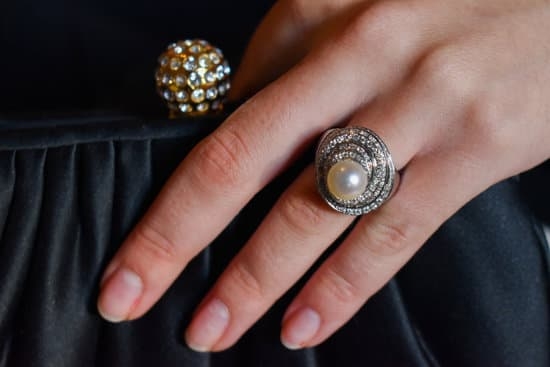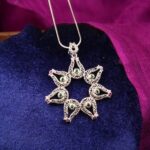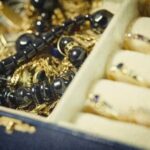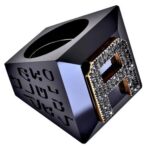Diamond jewelry holds a timeless allure and prestige that captivates consumers around the world. However, understanding the demographics of those who purchase diamond jewelry is essential for jewelers and marketers alike.
It allows them to tailor their products, promotions, and messaging to meet the unique needs and desires of their target audience. In this article, we delve into the intricacies of the consumer base of diamond jewelry, exploring factors such as age group, gender, affluence, occasions, engagement rings, social influence, and customization.
The age range of diamond jewelry buyers is an important aspect to consider. We will analyze the preferences and purchasing habits of younger generations, who often seek contemporary designs and alternative engagement ring styles. Additionally, we’ll investigate the buying patterns of older age groups and explore whether their motivations are purely sentimental or also influenced by status symbols.
Gender plays a significant role in shaping purchasing behavior as well. By examining the differences between men’s and women’s preferences in diamond jewelry, we can gain insights into societal norms and cultural influences that drive these choices. Whether it’s exploring men’s interest in statement pieces or women’s affinity for solitaire diamond rings, understanding these distinctions is vital for success in the industry.
Furthermore, we’ll take a closer look at affluent consumers who make up a considerable portion of diamond jewelry buyers. Investigating their economic status helps unravel the connection between wealth levels and desire for luxury goods like diamonds. This analysis sheds light on how economic stability plays a role in people’s willingness to invest in high-value items.
Another crucial aspect to explore is the occasions that prompt diamond jewelry purchases. Consumers often associate diamond jewelry with special events or milestones in their lives. By understanding these triggers, we can gain insight into what drives consumers’ emotional significance behind gifting or self-purchasing diamond jewelry.
In subsequent sections of this article series, we will continue to deepen our understanding by exploring topics such as motivations behind engagement ring purchases, the impact of social media on consumer behavior, and the rising trend of customization in diamond jewelry. By comprehensively examining these factors, we aim to provide a holistic view of the diverse consumer base that drives the demand for diamond jewelry.
Age Group
Preferences and Purchasing Habits of Younger Generations
One important demographic to consider in the diamond jewelry market is the younger generation. This includes millennials (born between 1981 and 1996) and Generation Z (born between 1997 and 2012). Despite stereotypes that they prioritize experiences over material possessions, these younger consumers still show a strong interest in diamond jewelry.
While the younger generation might have different preferences compared to older age groups, their purchasing habits are influenced by various factors. For example, they tend to value sustainability and ethical sourcing in their purchases. This means that diamond jewelry brands that prioritize responsible practices are more likely to attract this group of buyers. Additionally, many younger consumers are drawn towards unique and unconventional designs that reflect their individuality.
Buying Patterns and Motivations of Older Age Groups
On the other end of the spectrum, older age groups also contribute significantly to the consumer base of diamond jewelry. Baby boomers (born between 1946 and 1964) and Gen X (born between 1965 and 1980) display different buying patterns and motivations compared to younger generations.
For older age groups, diamond jewelry often holds sentimental value, representing milestones or achievements in life. They may be more inclined towards classic designs that stand the test of time. Moreover, as they have likely accumulated more disposable income over the years, they may be willing to invest in higher-priced pieces or even collectible items. Understanding these motivations can help diamond jewelry brands tailor their marketing strategies towards older age groups.
Regardless of age group, it is essential for retailers and manufacturers in the diamond industry to recognize the diverse interests and preferences among buyers of different generations. By catering to the unique needs of each age group, businesses can successfully adapt to changing consumer demands while still maintaining a loyal customer base.
Gender
When it comes to purchasing diamond jewelry, understanding the differences in buying behavior between men and women is essential. Cultural norms, societal expectations, and personal preferences all play a role in influencing the gender breakdown of diamond jewelry buyers.
- Examining purchasing behavior: Research has shown that women tend to be the primary purchasers of diamond jewelry. They often buy for themselves or as gifts for others. Women are more likely to view diamond jewelry as a symbol of status, beauty, and self-expression.
On the other hand, men typically purchase diamond jewelry for special occasions such as engagements, anniversaries, or milestone celebrations. However, there has been a growing trend of men also buying diamond jewelry for themselves as a statement piece or as a way to signify their success. - The influence of societal norms and cultural factors: Societal norms and cultural influences significantly impact the purchasing behavior of both men and women when it comes to diamond jewelry. For instance, engagement rings have long been associated with proposals and marriage in many cultures around the world.
This tradition has created an expectation for men to purchase diamond engagement rings for their partners. Moreover, societal pressures and perceived notions of femininity often lead women to desire diamond jewelry as a symbol of love and commitment. - Shifting dynamics: While traditional gender roles still play a significant role in shaping the purchasing behavior of consumers, there has been an emerging shift towards gender-neutral shopping experiences in recent years. Both men and women are now more open to exploring different styles and designs when it comes to diamond jewelry. Jewelers are responding to this change by offering diverse collections that cater to individual preferences rather than strictly adhering to traditional gender stereotypes.
Affluence
When it comes to understanding the consumer base of diamond jewelry, one important factor to consider is the economic status of the buyers. The purchase of diamond jewelry is often associated with luxury and wealth, and it is therefore crucial to investigate the correlation between income levels and diamond jewelry purchases.
Research has shown that there is indeed a strong connection between affluence and the desire for luxury goods such as diamond jewelry. Higher income individuals are more likely to purchase diamond jewelry as they have the financial means to do so. In fact, a study conducted by De Beers in 2019 found that consumers with an annual household income of $75,000 or higher were almost three times more likely to buy fine jewelry than those with lower incomes.
Furthermore, economic stability also plays a role in the purchasing decisions of diamond jewelry buyers. During periods of economic growth and stability, consumers feel more comfortable investing in luxury items like diamond jewelry. On the other hand, during economic downturns or times of uncertainty, consumers may be more cautious with their spending and prioritize essential needs over luxury purchases.
| Income Level | Percentage of Diamond Jewelry Buyers |
|---|---|
| Less than $50,000 | 15% |
| $50,000 – $100,000 | 30% |
| $100,000 – $150,000 | 25% |
| Above $150,000 | 30% |
The data above provides a breakdown of the percentage of diamond jewelry buyers based on different income levels. It is clear that as income levels increase, the likelihood of purchasing diamond jewelry also increases.
Occasions
Occasions play a significant role in prompting individuals to invest in diamond jewelry. Whether it’s a special event or an important milestone, these occasions hold emotional significance and often serve as a catalyst for consumers to purchase diamond jewelry. By understanding the occasions that prompt diamond jewelry purchases, businesses can better cater to the needs and desires of their target audience.
Exploring the events and milestones that drive consumers to invest in diamond jewelry
One of the primary occasions that lead consumers to purchase diamond jewelry is weddings. Engagement rings and wedding bands are symbols of love and commitment, making them essential items for couples tying the knot. The engagement ring market alone generates substantial revenue within the diamond industry. Additionally, anniversaries also act as important occasions for gifting diamond jewelry as a symbol of enduring love and celebration.
Another significant occasion that prompts individuals to invest in diamond jewelry is birthdays. Diamond earrings, necklaces, or bracelets are popular choices for birthday gifts, especially for milestone birthdays like 18th or 21st birthdays. The allure and timeless beauty of diamonds make them ideal presents for marking such momentous occasions.
Unpacking the emotional significance behind gifting and self-purchasing diamond jewelry
Emotions play a vital role in driving consumer behavior when it comes to purchasing diamond jewelry for others or oneself. Gifting diamond jewelry is often associated with expressing love, appreciation, and gratitude towards someone special in one’s life. It allows individuals to showcase their affection through a luxurious and lasting gift that holds sentimental value.
Self-purchasing of diamond jewelry is also on the rise. Many individuals view buying diamonds as self-rewards or investments in themselves, symbolizing personal achievements or milestones reached. This trend reflects changing social norms where women feel empowered to treat themselves with pieces they desire rather than waiting for someone else to buy them as gifts.
Understanding the emotional significance behind gifting and self-purchasing diamond jewelry allows businesses to create marketing campaigns that resonate with consumers’ emotions, ensuring that they are targeted effectively during these occasions. Companies can capitalize on the sentimental value associated with diamond jewelry to drive sales and cultivate lasting customer relationships.
Engagement Rings
Diamond engagement rings hold a special place in the world of diamond jewelry. The tradition of presenting a diamond ring when proposing marriage has been ingrained in many cultures for decades. This section will delve into the key buyers of diamond engagement rings and explore the motivations and desires behind their purchases.
One of the main factors influencing the purchase of diamond engagement rings is societal expectations. Many individuals feel compelled to adhere to traditional societal norms when it comes to proposing and getting engaged, which often includes presenting a diamond ring. The desire to follow these traditions and fulfill cultural expectations drives many people to invest in diamond engagement rings.
Furthermore, individuals seeking diamond engagement rings are driven by emotions and personal desires. To them, the ring symbolizes love, commitment, and the promise of a future together. The significance placed on this piece of jewelry makes it an important investment for those planning on proposing or getting engaged.
In terms of demographics, men tend to be the primary purchasers of diamond engagement rings. However, there is a growing trend of women also taking part in the decision-making process or even purchasing their own ring if they are involved in same-sex relationships or simply want to have more control over the selection process.
| Demographics | Percentage |
|---|---|
| Men | 80% |
| Women | 20% |
Understanding the key buyers of diamond engagement rings is crucial for businesses in the jewelry industry. By recognizing and catering to their motivations and desires, companies can effectively market their products and create offerings that resonate with this consumer base. Whether it’s appealing to traditionalists who value cultural norms or individuals who prioritize personalization and uniqueness, understanding the target audience is essential for success in the diamond engagement ring market.
Social Influence
Social media has become a powerful force in shaping consumer behavior across various industries, and the diamond jewelry industry is no exception. The impact of social media on diamond jewelry buyers is undeniable, as platforms like Instagram, Facebook, and Pinterest provide a space for individuals to showcase their personal style and aspirations.
This section will delve into the role of social media influencers and celebrities in influencing diamond jewelry purchases, as well as discuss how online platforms shape the preferences and aspirations of consumers.
One of the key ways social media influences diamond jewelry buyers is through the use of social media influencers and celebrities. These individuals have large followings and are often seen as trendsetters. When influencers or celebrities are seen sporting diamond jewelry pieces, it can create a desire among their followers to own similar pieces themselves. Many influencer marketing campaigns specifically target diamond jewelry buyers by collaborating with influencers who have a strong interest in fashion and luxury goods.
In addition to individual influencers, brands themselves also utilize social media platforms to showcase their diamond jewelry collections. By disseminating visually appealing content featuring their products on platforms like Instagram, brands can effectively pique the interest of potential buyers and drive them to make a purchase.
Social media allows for direct engagement between brands and consumers, as customers can comment on posts, ask questions about products, and share their thoughts and experiences with a broader audience. This two-way communication fosters a sense of community around the brand and creates a stronger connection between consumers and the diamond jewelry they purchase.
To cater to the growing demand influenced by social media, online platforms have also shaped the preferences and aspirations of diamond jewelry buyers. E-commerce websites allow for easy browsing and comparison shopping, providing consumers with access to vast collections from various brands all in one place. Additionally, online platforms offer personalized recommendations based on consumer behavior and search history, which can influence purchasing decisions.
The convenience of online shopping combined with targeted marketing strategies has made it easier than ever for consumers to find and purchase their desired diamond jewelry pieces. Overall, social media has become a powerful catalyst for the diamond jewelry industry, influencing consumer behavior and shaping the market in new and exciting ways.
Customization
In today’s fast-paced world, consumers are increasingly seeking unique and personalized products that reflect their individuality. This desire for customization extends to the realm of diamond jewelry as well. Custom diamond jewelry allows buyers to create one-of-a-kind pieces that hold sentimental value and showcase their personal style. As a result, the appeal of custom diamond jewelry buyers has been steadily growing in recent years.
One of the main reasons why custom diamond jewelry is gaining popularity is because it allows individuals to express their creativity and uniqueness. By designing their own pieces, buyers can choose the specific combination of diamonds, settings, and metals that best represents their personality and preferences. This level of control over the design process ensures that the final piece is a perfect reflection of the buyer’s taste.
Additionally, custom diamond jewelry offers a deeper emotional connection for buyers. Whether it’s incorporating birthstones or engraving personal messages, customization allows individuals to infuse sentimental value into their jewelry. Many buyers see custom pieces as heirlooms that can be passed down through generations, carrying with them the stories and memories of their family history.
The appeal of customization also lies in its exclusivity. Custom diamond jewelry is often made in limited quantities or even one-of-a-kind pieces. This rarity adds an element of prestige and luxury to the buyer’s collection. For those seeking something truly unique and special, customized pieces offer a level of distinction that cannot be replicated by mass-produced jewelry.
Conclusion
In conclusion, understanding the consumer base of diamond jewelry is crucial for anyone in the industry. The allure and prestige behind diamond jewelry make it a highly sought-after luxury item. However, it is essential to recognize that the demographics of diamond jewelry buyers are diverse and varied.
Firstly, age group plays a significant role in determining purchasing habits. Younger generations tend to have different preferences and motivations compared to older age groups. Younger buyers may be more inclined towards modern designs and self-purchasing, while older buyers may prioritize traditional styles and purchases for special occasions or milestones.
Gender also influences purchasing behavior, with differences observed between men and women. Societal norms and cultural influences often shape these differences, with men traditionally being more likely to purchase diamond jewelry for their partners or on special occasions.
Economic status is another key factor influencing diamond jewelry buying patterns. Higher income levels are often associated with a desire for luxury goods like diamonds. Economic stability provides individuals with the means to invest in high-end jewelry pieces.
Furthermore, occasions play a pivotal role in prompting diamond jewelry purchases. Significant life events such as engagements, anniversaries, or birthdays often drive consumers to invest in diamond jewelry. The emotional significance of gifting or self-purchasing diamond jewelry further motivates individuals to make these purchases.
Engagement rings hold a particular importance within the diamond industry and attract specific buyers. Traditions and societal expectations heavily influence engagement ring purchases, highlighting the desire for a timeless symbol of love and commitment.
Social media has also emerged as a powerful force shaping consumer behavior in the diamond industry. Influencers and celebrities showcase luxurious lifestyles adorned with stunning diamond pieces on online platforms, fueling aspirations among consumers.
Moreover, customization has gained popularity among buyers seeking unique pieces that reflect their individuality. The appeal of personalized and bespoke options allows consumers to stand out from the crowd while expressing their own sense of style.
Overall, knowing the diverse consumer base of diamond jewelry buyers is crucial in this industry. By understanding the demographics, preferences, and motivations of different segments, businesses can make informed decisions about product offerings, marketing strategies, and customer engagement. To thrive in the diamond market, it is essential to tailor products and services to meet the desires and expectations of these varied consumer groups.
Frequently Asked Questions
What is the best way to sell jewelry with diamonds?
The best way to sell jewelry with diamonds is to target potential customers who are specifically interested in buying diamond jewelry. One effective approach is to market the jewelry through various channels that reach this demographic, such as jewelry trade shows or online platforms specializing in diamond sales.
It is essential to showcase the unique qualities of the diamonds used in the jewelry, emphasizing their cut, clarity, color, and carat weight. Communicating any special features or certifications, such as GIA certification, can help build trust with potential buyers and increase the perceived value of the diamonds.
Who will pay the most for diamonds?
When it comes to selling diamonds, it is often private buyers who will pay the most for these precious gems. Private individuals purchasing diamonds for personal use tend to have a higher emotional attachment and willingness to invest in these gemstones compared to commercial entities such as jewelers or resellers.
Engaging with private buyers can be done through various means, including advertising on relevant websites, showcasing items at exclusive events or auctions, or working with reputable brokers who have access to a network of potential high-paying clients.
How much will jewelers pay for diamonds?
The amount jewelers are willing to pay for diamonds can vary widely depending on several factors including the size, quality, and demand for specific stones. Jewelers generally aim to purchase diamonds at a price that allows them some room for profit when they eventually sell the stone as part of their inventory.
Typically, jewelers will consider factors like the diamond’s 4Cs (cut, clarity, color, and carat weight), as well as its marketability and current demand trends when determining how much they are willing to pay. Negotiating skills and having multiple offers from different jewelers can often result in getting better prices for your diamonds.

Welcome to my jewelry blog! My name is Sarah and I am the owner of this blog.
I love making jewelry and sharing my creations with others.
So whether you’re someone who loves wearing jewelry yourself or simply enjoys learning about it, be sure to check out my blog for insightful posts on everything related to this exciting topic!





